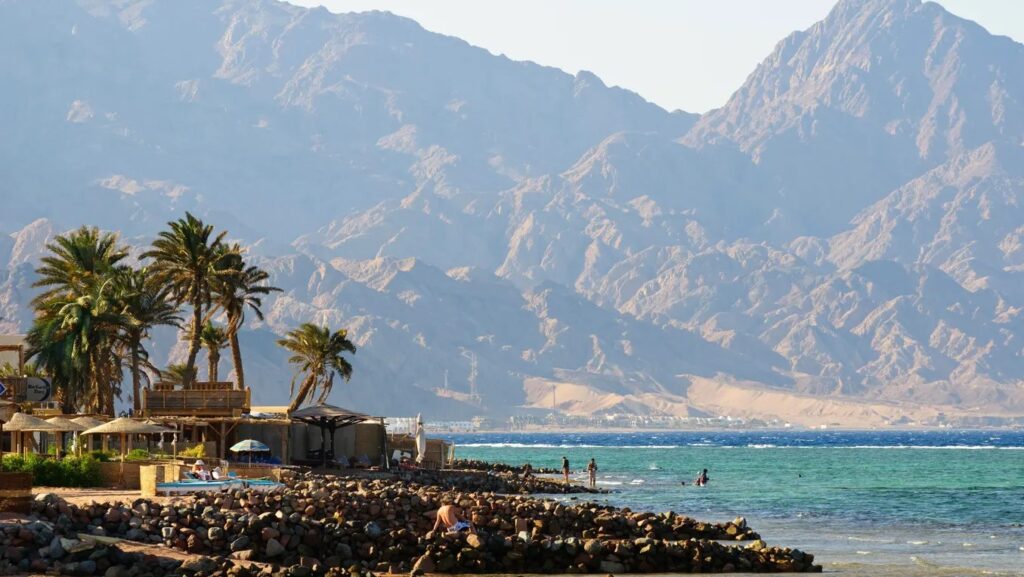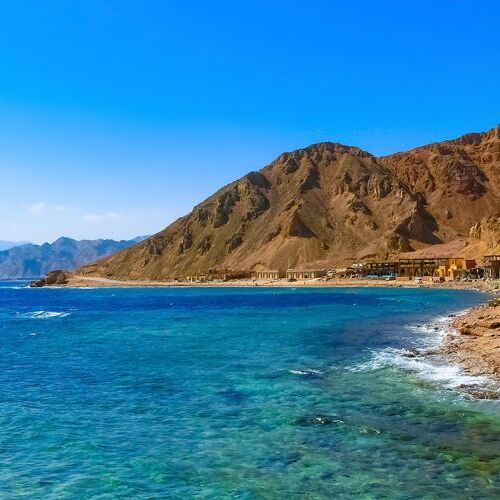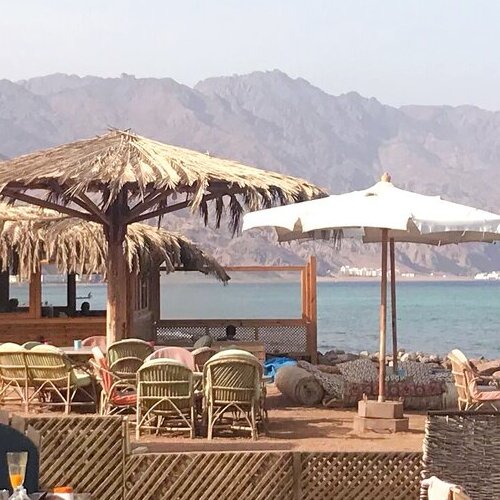No other nation in the world says ‘Welcome’ as often as the Egyptians, and every time, they mean it. While the ancient civilization of Egypt continues to amaze, contemporary Egyptians are equally remarkable.
Dahab: The Bohemian Paradise of the Red Sea
Bohemian Paradise Unraveled: The Historical Tapestry of Dahab
Dahab, a jewel in the Sinai Peninsula, is not just a stunning destination; it’s a bohemian paradise with a history as captivating as its landscapes. From its humble beginnings as a Bedouin village, Dahab has grown into more than just a home to its 15,000 souls—it has transformed into a haven for global travelers. This bohemian paradise beautifully marries resilience, transformation, and multicultural coexistence, making it an unparalleled choice for those seeking an escape with a blend of culture and tranquility.

The Early Days and the Hippie Haven
In its early days, Dahab was an unassuming Bedouin settlement, its tranquility and pristine waters drawing the free-spirited hippies of the 1960s. This era of peace and burgeoning popularity was abruptly halted by the outbreak of the war between Egypt and Israel, casting a shadow over Dahab’s potential growth.
A New Chapter Post-1982
The city’s fortune took a turn for the better in 1982, following its return to Egyptian sovereignty. This period marked the beginning of a new chapter in Dahab’s history, one that would see it slowly blossom into a sought-after tourist destination.
The 1990s: A Melting Pot of Cultures
By the 1990s, Dahab had started to unfurl its wings. Hotels sprung up, and the city once again opened its arms to vacationers and tourists. What made Dahab unique was its peaceful atmosphere, fostering a harmonious coexistence among people of diverse nationalities – from native Egyptians to expatriates from Sudan, Britain, the Netherlands, Russia, and beyond.
Shadows Amidst the Sunlight: Challenges and Resilience
Despite its idyllic description, Dahab has not been immune to the challenges facing the region. In 2006, the city experienced a tragic moment when a bomb explosion claimed the lives of about 23 people, casting a shadow over its peaceful image.
Furthermore, the economic disparities were evident, as some local residents felt marginalized by the tourism boom. Poverty remained a stark reality for some, raising concerns about their exclusion from the benefits of Dahab’s growing popularity.
The Role of Social Media and the Arab Spring
The advent of modern information dissemination, particularly through social media, played a pivotal role in Dahab’s resurgence. Images and videos shared by tourists showcased Dahab’s beauty to a global audience, sparking renewed interest in the city.
Additionally, the 2011 unrests and the fall of Hosni Mubarak’s regime had an unexpected silver lining for Dahab. As economic instability reduced international travel, Egyptians began exploring their own country for vacation destinations. Dahab emerged as a prime choice, its allure undiminished, offering a serene escape within the nation’s borders.
Dahab’s history is a rich tapestry, woven with the threads of cultural diversity, resilience in the face of adversity, and an enduring appeal that transcends time. This small Bedouin village, transformed into a global destination, continues to enchant with its golden sands, clear waters, and the promise of peace and multicultural harmony.
Created On March 18, 2020
Updated On Aug , 2024
DAHAB Travel Guide



